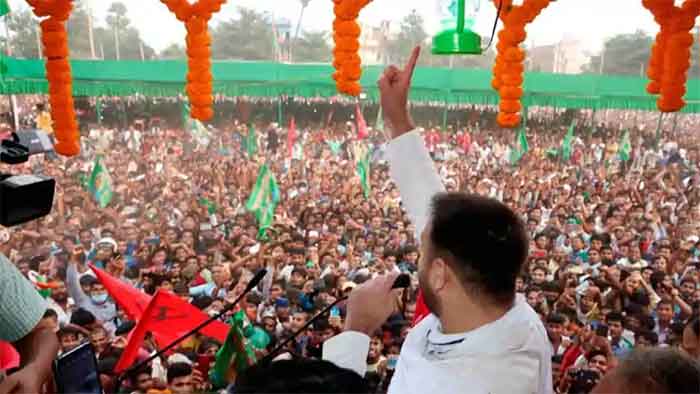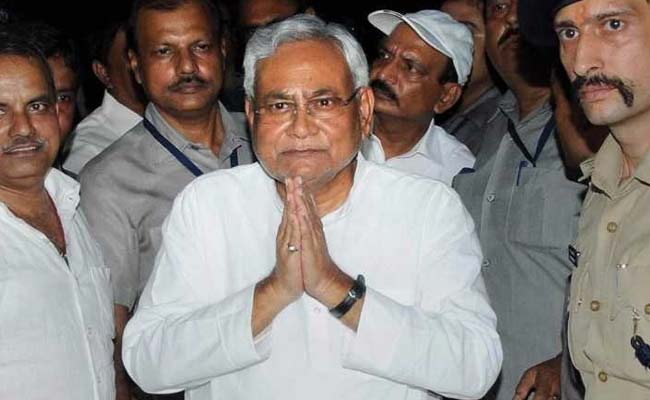
Why Bihar Assembly election 2020 is Important? There are three reasons that made Bihar Assembly 2020 an epitome in India. First, a crucial assembly election during Covid -2019 when digital consultations were given due recognition. Second, the absence of two political veterans-Lalu Prasad Yadav and Late Ram Vilas Paswan from political podiums in the state. Third, digital participation and its use become critical for both voters and politicians for optimization.
After splendid use of digital platforms during 2019 Parliament election, it is time to conduct next experiment particularly the extensive use of digital gadgets in the time of Covid-19 global pandemic. Bihar became the first state in terms of population and adult franchise in the world who are going to choose new regional/state government for them. UP assembly election 2012 was decisive election in context to media in India…when media prepared election manifestos that what issues are going to be dominant during election campaign and thereafter all political parties who have stake in the state, had followed accordingly. The similar situation arrived again when Bihar Assembly election 2020 is progressing where Digital platform or online media would play a decisive role when Digital election rallies, Digital election poster, target voters (through AI profiling by Facebook or other involved agencies), Digital election meetings will conduct through digital equipment in order to reach out to voters. Such process and procedures are started couple of months back when BJP organized a digital rally to reach out their sympathisers. This election will create a new landscape for future elections not only in term of campaign, rallies, meetings rather to propagate false information, misinformation, inauthentic information and handling to all such will be a herculean task for Election Commission of India in the country.
This election is not important in sense that who managed to fill the gaps of digital divides that is persistent in the society or won the election rather to decode the role of digital gadgets in the society where digital divide is inevitable that reflects in various representations. The digital divides rises due to the lack of access of the informational tools. The reasons behind digital divides are: socio-economic status, income, education, race, caste, gender, geographic (rural-urban) location, age, skills, awareness, political, cultural and psychological attitudes. According to Telecom Regulatory Authority of India (TRAI) the digital divides in Bihar deciphered an undisclosed saga and administrative failures wherein 20.60 person in 100 person accessed Internet in rural areas while in urban areas the rate of Internet penetration is almost 92.99 person in 100 person. In other way, around 25.37 million people from rural areas having Internet connection while in urban areas the rate of Internet subscribers is 18.52 million and in total it is around 43.88 million people have Internet subscriptions in the state. Although, there is no exact figure to access the exact number of private Internet subscribers but in a tentative estimation that may be ranged in between 70-80 percent of total population who are enjoying Internet facilities or using digital gadgets in mundane ways to being connected throughout world. The rural-urban demography open another Pandora box wherein around 89 percent people lived in rural areas while around 11 percent lived in urban areas according to 2011 census of India. Bihar has a total literacy rate of 63.82 percent (73.39 percent for males and 53.33 percent for females), recording a growth of 20 percent in female literacy over the preceding decade. Out of 123 million population around 80 million are youth population. Bihar registered the highest growth in internet users across both urban and rural areas, registering a growth of 35 percent over last year.[1] Nearby 28 percent population used Internet in the state in compare to India it is 36 percent.
Though, there is no exact digital data on Bihar but we can map the expansion and participation of users through proportional calculation. In India, the number of users of social media platforms increased tremendously in last few years and that enabled to join in the club of top ten social media users in the world. With the ease of internet access, the number of social media users in India stood at 326.1 million in 2018 and expecting to be 448 million by 2023. Facebook remained the popular choice among social media platforms as of 2017. During Covid-19 pandemic these social media was considered as part of living when mostly people was confined inside their residents under lockdown. BJP held an Online political rally in Bihar to warm up their supporters and aggressively used the digital mechanism to convey their political messages. According to Statista 2020, As a surge in social media Facebook had shown the highest traffic at around 86 per cent among social media platforms followed by Instagram 5 percent and You Tube 3.2 per cent in April 2020 in India. The popularity of social media companies has consistently attracted more in comparison to the last quarter of the financial year. The other social media networking sites like WhatsApp, Instagram and YouTube are far behind from Facebook in terms of volume of traffic. In 2018, around 24 per cent population accessed the social networks and the rate will further anticipate with time and expansion of digital infrastructure in the rural belts in the country. Mark Zuckerberg himself said how India is very important in Facebook’s history. According to echoVME news about 71 per cent of India’s population aged between 18 to 34 years use Facebook alone. In 2015, out of 112 million users on Facebook in India, around 99 million are phone users. The percentage from male to female ranges from 76 to 24 per cent.[2] More or less the role of Facebook and WhatsApp will be crucial to both voters and politicians to use these technologies to reach them.
Dr Shekh Moinuddin associated with Jamia Millia Islamia and author of five books and published fifteen research papers in national and International Journals. He completed six funded research projects and his academic interests lies on social media, media geography, e-religiosity and digital democracy.
[1] For details, see,https://economictimes.indiatimes.com/tech/internet/internet-users-in-india-to-reach-627-million-in-2019 report/articleshow/68288868.cms?utm_source=contentofinterest&utm_medium=text&utm_campaign=cppst. Accessed 15 Oct 2020.
[2]Economic times (Delhi edition, 6 March 2019). Available
at: https://economictimes.indiatimes.com/tech/internet/internet-users-in-india-to reach627million-in-2019 report/articleshow/68288868.cms?utm_source=contentofinterest&utm_medium=tex&utm_campaign=cppst, Accessed 15 Oct 2020
SIGN UP FOR COUNTERCURRENTS DAILY NEWSLETTER













































